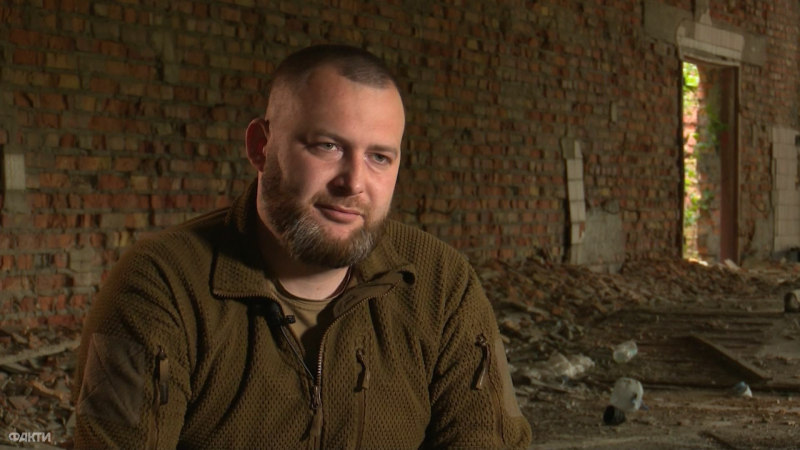
Vitaly Nashchubsky, commander of the 92nd separate assault brigade named after Koshevoy Ataman Ivan Sirko, spoke in an interview with ICTV Fakty about the enemy's summer offensive campaign, whether Kharkov is threatened with occupation, why mobilized people are going to the Special Operations Department, the first battles of 18-24 year old recruits, and the use of robots on the front lines.
His troops have been at the front since 2014, now defending the state in several directions and are one of the most combat-ready, and Nashchubsky himself has risen from platoon commander to brigade commander.
About the military path: from lieutenant to commander
— Vitaly, you have been commanding the 92nd separate assault brigade named after Sirko since August 2024. How did you become the commander of the 92nd brigade and what preceded this?
Now watching
— In the war from the very beginning — since 2014. My service began before 2014. In 2013, I came as a young lieutenant, a graduate of the Ground Forces Academy — now it is the National Ground Forces Academy. Then the path is like all commanders: squadron commander, company commander, deputy battalion commander, battalion commander. I was deputy commander of the 58th separate motorized infantry brigade. There I was already the chief of staff of this brigade. And then I was appointed commander of the 92nd separate assault brigade. This was in August last year.
— In what directions did you fight?
— Luhansk: it was Shchastye, Trekhizbenka, Stanitsa Luhanska. Then there were Avdiivka, Maryinka, Krasnogorovka, Yekaterinovka, Popasnyanskoye direction. And then, already during the full-scale invasion of the enemy — the Kharkov direction. And again Luhansk region — Svatovo, Kremennaya.
— You are originally from the Khmelnytsky region, but you had to defend the east.
— It just happened that way. It doesn’t matter where you come from. The war is common to all of us, to all citizens of Ukraine. If we don’t stop the enemy in this direction now, he can come to the Khmelnytsky region.
How the enemy has changed since 2022
— How has the enemy changed over the years? Is there a difference between those who were captured in 2022 and those who were captured now?
— There is a difference, of course. It is colossal: if in 2022 it was entirely their contract servicemen, and some conscripts were also caught, now it is contract servicemen, whom they take in money. They are paid, if converted into the dollar equivalent, about 20-25 thousand dollars so that they sign a contract for a year. And this is a lot for their population, because they have mortgages, loans, debts, plus they have a criminal record. Probably nine out of ten are those who have previously been prosecuted.
In 2022, there was a larger contingent of young people. Now this contingent is already older, 50+ were even taken prisoner. We haven't met young 18-year-olds for a long time, as far as I know, they mostly attract young people to such specialties as UAV operators, possibly to reconnaissance units, they take younger ones as special forces.
– But things didn't get any easier for us. Why?
— Because drones are developing very powerfully. If we had an advantage or parity in drones, we saw in 2023 there was a turning point when the enemy was stopped in all areas, we carried out a lot of counter-offensive actions, we restored the lost position, we attacked. The enemy then intercepted our skills, our ability, our cunning and is now fighting us with our methods and our means, that is, similar ones.
They didn't have drones, the first to use FPV drones on the battlefield were the Armed Forces of Ukraine, the Defense Forces in general. And we effectively destroyed the enemy's personnel, equipment and shelters. Accordingly, our drone component was predominant. At present, I would say one to one. And electronic warfare systems do not always cope with this.
— Are these fiber optic drones?
– Yes, now there are drones on fiber optics, which are controlled via a wire, it is very thin, but the control signal is transmitted through it. Accordingly, its electronic warfare systems cannot suppress it, it only needs to be destroyed – with small arms and so on, there are many methods, I will not reveal them all.
– How can we counteract this? This is quite a serious problem for our troops.
— Those drones that are radio-controlled, there are no problems with them, we detect them, suppress them with electronic warfare, or intercept their signals, respectively, we know where they are and destroy them. And the problem now for everyone is drones on fiber optics, which fly far. There were cases when they flew 25 plus kilometers and tried to interrupt our logistics.
But certain measures have been taken, and now we don't see anything like that. We detect them earlier, destroy them earlier than they fly to distant borders, even beyond tactical depth.
— How do we destroy them, if we can talk about it?
– There are many methods. I won't spread them yet.
— Other teams write that they have already come up with something against fiber optics.
– Yes. We are already using this, but we are still developing this direction. There are several variations, not only like in the video from the Internet, where our guys destroy these drones with a pump-action shotgun. There are other methods.
– Kamikaze drones? Do we have any development here?
– There is always development. But we can’t talk about it yet.
On the creation of units of ground robotic complexes
— Currently, many brigades are creating units of ground robotic complexes.
— I think that in the near future this will happen. There will be separate battalion-level units, possibly more. Now they are already in units, and in my brigade there is also a unit of ground robotic complexes. I will not talk about its scale, but it is quite powerful. At present, they are already using these drones for logistical support. For example, the unit commander reports to me in the morning or evening how much logistics they have transported in a certain period of time or completed this or that task.
For example, last night they transported more than 700 kg of logistics supplies: ammunition, provisions, water, generators, gasoline, everything that the units need. We are not taking the combat contact line itself now. We carried out operations to evacuate the wounded from the combat contact line.
I won't say that it is large-scale, but we are working on it. This development is ongoing. Now we are closing logistics missions completely, that is, up to the combat support unit, where the mortar, UAV, automatic grenade launcher crews are located, this is now fully provided by ground operations.
Live broadcast of ICTV Live Latest news Pilots of air defense groups of the DFTG will be paid 100 thousand UAH as participants in combat operations
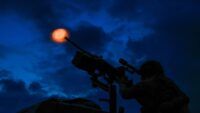
EU wants to stockpile critical resources due to geopolitical risks – FT

Slovakia Blocks New Sanctions Package Against Russia

BlackRock Stops Seeking Investors for Ukraine Recovery Fund

Ukraine signs deal with US company to produce drones — Zelensky

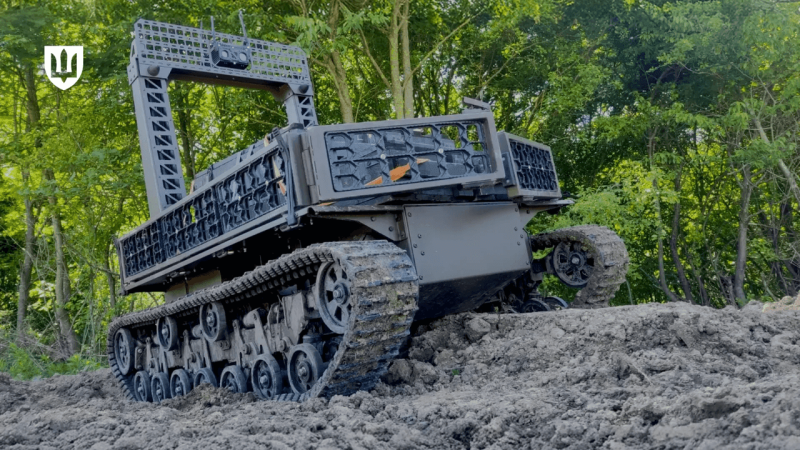
Ukrainian unmanned ground system Murakha. Photo: Ministry of Defense of Ukraine
– Otherwise you would have to send a person there.
— Yes, consider how many routes there and back would have to be made to move 700 kg to three positions. A person could take equipment and plus 20-30 kg, no more, pack it in a backpack and move it. Construction materials are also transported by robots, there is already a video in the media where robots transport logs so that the infantry can equip positions.
Also ground robotic complexes as auxiliary for units in defense, or combat support units, or for assault units. That is, this NRK can go behind the assault group and carry the same ammunition, provisions, so that they do not carry on themselves. It can move covertly.
– It saves strength and lives, right? And where is the 92nd brigade fighting now? You usually have quite dangerous directions.
— A brigade with non-standard tasks, it is in the name — 92 separate assault brigade. There are different tasks of both defensive and offensive nature in different directions. The brigade is currently performing tasks in the Kharkov, Lugansk, Donetsk directions.
Is Kharkov at risk of encirclement?
— But are there most of you in the Kharkiv region? Is Kharkiv threatened with encirclement, semi-encirclement?
— As of today, there is no actual threat. The enemy, yes, has a group of troops that is in a positional defense, just like us. Sometimes they try to carry out local assault operations. Recently — a month ago, on May 15, they tried to carry out large-scale offensive operations. About 40 armored vehicles were used. They were promptly detected and destroyed before they crossed the state border. Their task is to form a so-called 10-15 kilometer buffer zone in different parts of the direction, not only where the 92nd brigade is located, so they carry out local assault operations. There is daily shelling, drone strikes, and, unfortunately, daily losses of equipment and weapons. There are also, unfortunately, losses among personnel. The enemy does not sleep, he is not in hibernation mode. He is constantly active.
— Liptsovsk direction in Kharkiv region, you have been there for a long time, how is it important for the defense of Kharkiv?
– This is the gate to Kharkov. That is, this is a development, the city was expanding to the north. You can leave Kharkov, go in the direction of Liptsy and you will not even see, if you do not pay attention to the road signs, that you have driven from one village to another. And everyone knows that in an urbanized area, namely in populated areas, it is very difficult to fight. This is a development. There, every house can be a potential shelter, every cellar, every well, swimming pool – potential shelters.
Now the enemy is mostly in the field: plantings, forests, gullies, ravines, and it is easier to contain him there. We have more open areas than closed ones. And in a populated area, we will need a lot of drones for observation, a lot of infantry to create a grouping for normal defense. Accordingly, more resources will be needed. Therefore, we contain the enemy in the fields and do not allow him to enter Liptsy. Because then there will be a very big problem – 20-25 km to Kharkov, it seems like a long distance, but when in populated areas, it is very close.
— Are they trying to get through on motorcycles?
– Yes, there is the use of motorcycles, as in all directions. They took this tactic from African countries, where it is used, because they do not have armored vehicles, and they use motorcycles, quad bikes, buggies. A lot. There are even cars like VAZs, converted into buggies, just cut off the roofs, and they move on them. We identify and destroy.
— Are they changing their tactics or not?
— The tactics have changed, at least this is the use of motor vehicles. Previously, these were armored offensive actions, if again about 2022-2023. And 2024 was already the use of the first motorcycles in some areas. We find and destroy.
The installation of non-explosive engineering barriers is also being increased. The tactics have definitely changed. Previously, it was somehow massive, in several directions with the use of a large number of armored vehicles, but now it can be an unattacked area, which was in a relatively dormant mode for a month or two, where there was shelling and the enemy did not show itself. And one morning, a group on motorcycles can simply ride into the interposition space in the middle of a field, enter the flank and rear of our units on the line of combat contact. Then there are more groups that reach them on the same motorcycles or buggies and directly storm this position.
And Kupyansk is an enemy two or three kilometers from the city, right?
— I can’t say for sure, we don’t carry out tasks directly in Kupyansk, but I can say the following: Kupyansk is important to the enemy because it is a bridgehead on our right bank of the Oskol River, and, accordingly, where a large number of personnel can be hidden. Again, it is a populated area. The same story as with Liptsy — he can enter a populated area, and this will be a very big problem. Yes, they want to get there, the Defense Forces are holding back the enemy, destroying his crossings. Now no, how is it possible that everyone thinks that a crossing is a full-fledged bridge that the military has installed and equipment is transported across it. All the crossings that they are currently building are a stretched rope across the river, an inflatable boat, and they try to cross there one by one, two by two. Again, they are discovered, destroyed, but they have successful moments when they do cross. And already on our side, they have to be destroyed in the same way.
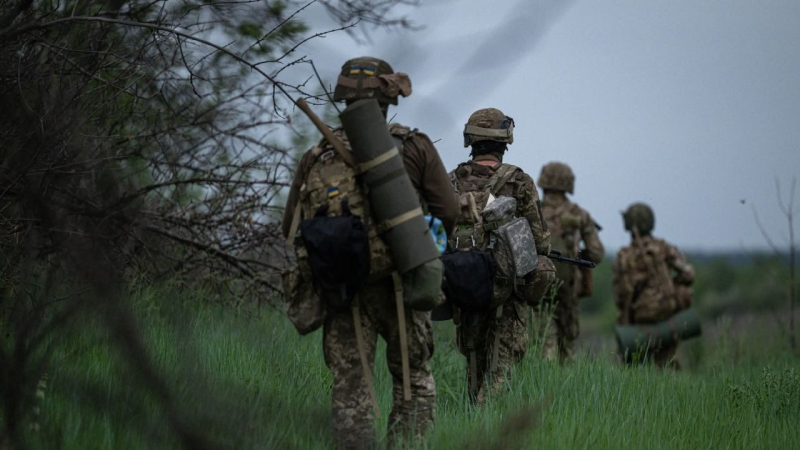
Photo: General Staff of the Armed Forces of Ukraine
— Civilians in Kupyansk suffer greatly from KABs. How can they be counteracted?
— There are certain means that counteract KABs, but unfortunately they are not 100% effective yet, and KABs fly in. When the enemy uses them a lot, it is not always possible to divert them away from populated areas so that they fall in the fields. KABs are a big problem for us in all directions of the front.
— There is an opinion that it is precisely because of the KABs that the fortifications that are being built are ineffective, because there are a large number of soldiers there that can be hit with one blow? Is there any point in fortifications?
— There is always a point in prepared positions, because these are at least the positions where the unit or brigade commander will use his reserve if the area is broken through in one direction or another, so that there is somewhere to bring his reserve to prepared positions, and not just into an open field. Therefore, there is a point. To say that it makes sense to build such huge platoon strongpoints that were built before, probably such large ones are not needed. Much smaller ones are needed and on commanding heights.
About mobilization, motivation and SOCH
— We talked about how the general characteristics of the enemy have changed, but how have the general characteristics of our military changed: 2022 and now? Mobilized personnel who are delivered from the TCC — how do they fight? Are these servicemen really less motivated?
— I can say with confidence that yes, our motivation has changed, probably for the entire population of Ukraine. We have seen demotivation, starting in 2023. If in 2022 we had queues at the TCC, everyone wanted to go fight, defend their state, now we do not see this at all. Well, I do not know what our population is hoping for, I will speak for the male side. If you do not fight, defend your state, you will fight, feed and defend another state.
— There are no men left in the occupied territories; they are forced to fight for Russia.
— If Russia seizes territories, I am 99.9% sure that men will be forced to fight, and there will be no such story as we have — SOCH and the like. There will be harsh methods. We see how Russia treats its servicemen. Therefore, it is better to defend your country, your state and join now, while it is not too late. Those territories that were occupied before 2022, they are fighting fully. We took them prisoner, and they directly say that they were simply busified back in 2022.
— Why do our servicemen go to the Special Operations Department? Are they afraid of dying, are they not ready to change their way of life, or why?
— Honestly, I don’t know why this is. Everyone probably has their own cockroaches in their head. For example, a serviceman comes to our military unit, he doesn’t go to war right away. He has almost three months of full training: 45 days of basic combined arms training, professional training — if he’s a grenade launcher, machine gunner, there are different positions, a preliminary selection is carried out before he’s assigned to a particular position. Drivers have professional training in training centers, from two weeks to 45 days, together this is already three months. When he returns from the training center, he has another 15 days of adaptation in the unit without being used in combat. In such a period, I think, it would be possible to learn basic firearms skills. Well, we teach him. There are people who go to the special forces training center from the training center. Why? It’s not clear. Before the training center, they go to the special forces training center as well. Why? It’s not clear.
– And if he returned from the Special Operations Department back to the army, do you trust him? Can you trust him with an important task?
— Here we are trying to understand the reason why this happened. Does anyone have problems at home? There is a wife who is screaming into the phone: “I am filing for divorce because we have a family here, two children, and you are fighting there. I don’t see you at home.” This plays a psychological role on any man. Perhaps there are other problems at home. And he was afraid to tell his commander that he has a problem, I need a few days to solve it. He made the decision on his own and went home. Accordingly, we must react to this immediately.
On recruitment of volunteers under Contract 18-24
— Are there any such problems with recruits under Contract 18-24?
— There were no global problems, but there are a few guys who came, thought they could do it, they come and take off their rose-colored glasses. They thought that here they would be carried on hands. Everyone who came to us immediately enters the status of a soldier. That is, there are no concessions. I will not say that there are any excesses with discipline, everyone has equal rights. Definitely equal. Everyone has a task, they undergo a course of basic general military training. Before BOVP, we have a “zero day”, when they are tested for stress resistance. There are two guys who have an acute reaction to stress: one fell into a stupor, his blood pressure rose, he lost consciousness, he has not even been to BOVP yet. Now he is undergoing treatment.
There is another case, also an acute reaction to stress, he started having panic attacks because there were explosions, shooting near him. The man just came from civilian life, he should be immediately tested for stress resistance.
– Will anything else come of it?
— He will return from treatment, will be enrolled in another group, and we will see how it goes. He will again go through this “zero day”, and then begin classes. This is the order, according to the basic military training course program.
— Is there a SOC among these young people?
— There are several, yes. Different reasons, again. There are times when a girl said that he left her because he went to the army. Some have family problems. To say that they ran away because of a biased attitude — that never happened. Here you can talk to all the guys, to your brothers-in-arms, and they say that he was withdrawn for several days, talked to his family on the phone and there was some kind of quarrel. They have a certain period of time allotted when they talk on the phone, because they are without phones at all. We try to filter and control right away, but when something like that happens, an official investigation is conducted.
— But compared to those mobilized, this is a small number, right?
– Yes, because the guys here voluntarily sign the contract themselves.
— And what about those guys aged 18-24 who have already been in combat?
— They showed themselves quite well during the introduction of military operations. There are those who passed through several times, participated in assault operations and quite successfully.
— In what directions are they fighting?
— It varies. All recruits aged 18-24 choose their own unit. From the first battalion to the last unit in which they have the right to serve. There is a specific list according to the resolution of the Cabinet of Ministers of Ukraine, which specifies which positions they have the right to occupy. And they choose these positions. That is why they are in different directions.
— Do they go on missions as a whole group of young recruits, or are they joined by some experienced military personnel?
“They do not carry out tasks on their own; they are assigned to those who already have combat experience.
— And what do the recruits who have already been in combat say? Did they have enough training and preparation?
— From talking to the battalion commanders, they are happy, they are prepared, disciplined. When they returned, they themselves analyzed the actions of their group and addressed the company commander, the battalion commander: “We will rest today, and then we need to go to the training ground, we know our mistakes, we want to correct them.” And we provide them with this.
— What advantages do you see in this young age?
— These are young, motivated guys, judging even by myself, I was also a 21-year-old lieutenant in 2014, who came with romance in my eyes. In 2013, I came directly to the brigade, and in 2014 the war began. Accordingly, I like their motivation, motivation and desire for the integrity of our country as a whole. They do not see themselves under occupation, they do not see themselves in captivity as some kind of slaves, under the Moscow horde. They see themselves as free people. And this motivates others very much. They look at them and also pull themselves up to them.
— And what about physical endurance?
— At first, when they came, it was so-so. Then, after 45 days of BOVP, it got much better. They have physical training and physical exercise every day. The first two weeks were very difficult for them, I know for sure, because I communicate with them constantly. You saw the guys after the second day of control classes, they are already tired, tomorrow they will be even more tired, but they are positive.
– What do they teach them? They probably didn't even know how to shoot?
— Yes, basic training: tactical and technical characteristics of weapons and armament, medical training, fire training, that same shooting, engineering training — that’s the base. Everything. During basic military training, there is a program that we strictly adhere to.
— Do you have any girlfriends?
– No. Just guys.
– And they will be stormtroopers?
– Well, there is a grenade launcher in the assault squad, there is a machine gunner in the assault squad. There is a sniper in the reconnaissance units. That is, different directions that they choose for themselves. There are guys who first chose a position, for example, a sniper, then say: “No, I saw this cool machine gun, I want to be a machine gunner.”
– Some say that they didn’t even tell their mothers that they were coming here, and when will the mothers finally find out, have there been any complaints?
— Personally, I don’t have one. We have a civil-military cooperation department, we have hotline numbers, but there hasn’t been a single case yet where someone was looking for someone somewhere. Yes, there are guys who sign contracts and don’t tell their parents about it, because every father and mother there worries about their child, and according to the law, mobilization is now after 25 years. Accordingly, they were against these guys going. But the guys are motivated, I repeat, they wanted and want to. They went to recruiting centers themselves, or called us on our phones, contacted us on social networks — there is a lot of advertising throughout Ukraine. Even two guys came to us from Transcarpathia, two classmates, they are 22 years old. They wanted to fight even earlier, but their parents wouldn’t let them. There are people from Lviv, from Odessa, guys from all over Ukraine.
— And did the million play a role?
— I wouldn’t say so. According to the procedure, after signing the contract, within five days we have to pay the first 200 thousand UAH. Well, probably, when we paid them these 200 thousand UAH, someone had a childhood dream of buying something, someone transferred all 100% of these 200 thousand UAH to their parents, because they had to pay off certain domestic problems. There are guys I talked to who say: “I want to put aside, save up, I want to buy myself an apartment.” Someone wants to buy a car after the end of the contract or during the contract. Everyone has their own plans, their own goals. When they received the first funds, they were like: “Oh, right, we were not deceived, it really came.” After the full training cycle, when they are already going to carry out their first combat missions, they are paid another 300 thousand UAH. And they received everything on time, there were no delays.
About the enemy's summer offensive campaign
— Regarding the so-called summer campaign of the enemy, which began in the spring, is it continuing or has it stopped, do we understand the enemy’s plans and can he advance in the Kharkov region?
— It continues and will continue — summer is in full swing. Why does everyone call it a summer campaign? Because when it is autumn-winter, there are difficult weather conditions — wet soil, rain, frost, sub-zero temperatures — it is more difficult to carry out tasks. Now the weather is more favorable there, leaves have appeared on the trees, there is more shelter on the battlefield. This was expected, and everyone understood it, because it is easier to carry out tasks when it is dry, not raining and not cold. Therefore, it will continue until all their reserves that they prepared over the winter are erased, until the mobilized personnel, weapons, military equipment are destroyed. This is the first thing that can stop them.
The second is the weather conditions, which may come as late as autumn. Therefore, no one can say exactly when this campaign will end. We understand the enemy's plans, where they will be, where they want to advance. The plans do not change. The maximum plan is to seize the entire territory of Ukraine.
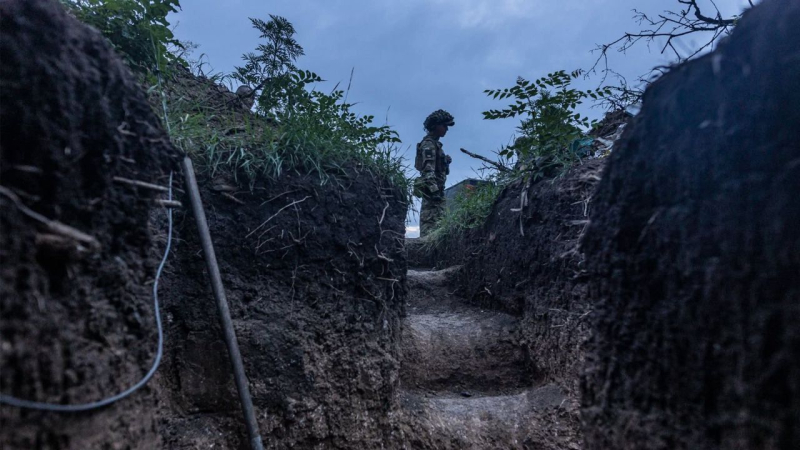
Photo: General Staff of the Armed Forces of Ukraine
— What is their priority now?
— The priority is probably in each regional center, in each direction — Sumy, Kharkiv, Donetsk, Luhansk, Zaporizhia, Kherson. Each direction has its own priorities — to seize as much territory as possible. We don’t know whether it will be 2 km of one forest belt or one populated area. Where the enemy can accumulate more troops, there the commanders react to threats directly in one direction or another.
— Do you have enough weapons, do you have anything to fight with?
— There are never too many shells, and there are never too many drones. There are never enough of them, there are never enough of them. And I think that in every army during active combat there is always something missing. More is allocated to certain sections of the front, and less is allocated where it is calmer, probably, in order to accumulate some reserves. So I won’t say that there is 100% enough. But at the moment, there is enough in those sections where I carry out certain tasks with my units.

